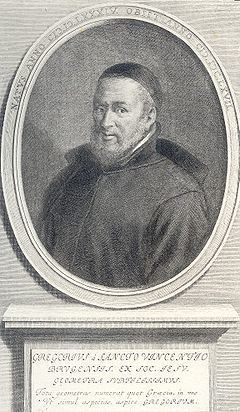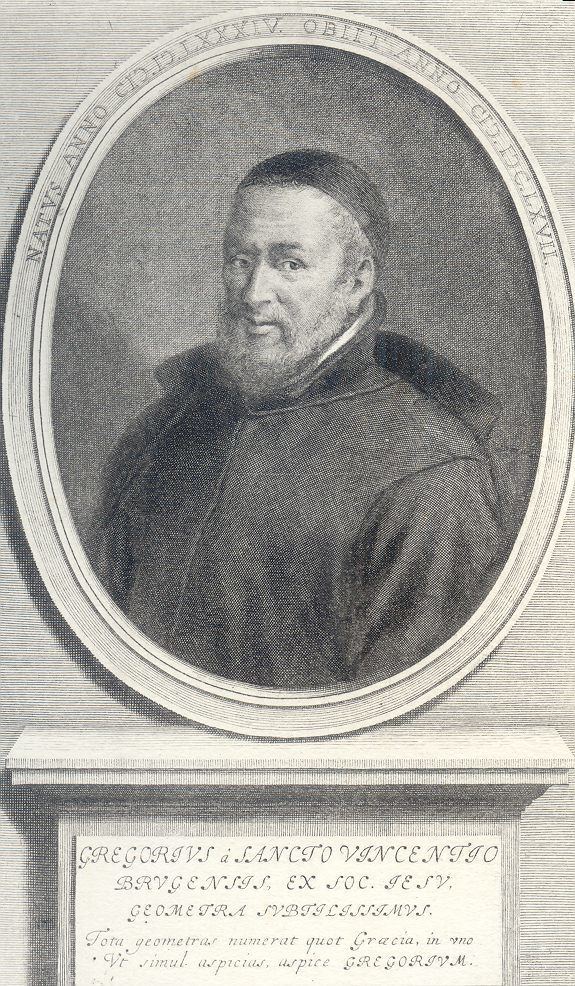Name Gregoire Saint-Vincent | Role Mathematician | |
 | ||
Died June 5, 1667, Ghent, Belgium | ||
Grégoire de Saint-Vincent (22 March 1584 Bruges – 5 June 1667 Ghent) was a Flemish Jesuit and mathematician. He is remembered for his work on quadrature of the hyperbola.
Contents

Grégoire gave the "clearest early account of the summation of geometric series." He also resolved Zeno's paradox by showing that the time intervals involved formed a geometric progression and thus had a finite sum.
Ductus plani in planum
The contribution of Opus Geometricum was in
making extensive use of spatial imagery to create a multitude of solids, the volumes of which reduce to a single construction depending on the ductus of a rectilinear figure, in the absence of [algebraic notation and integral calculus] systematic geometric transformation fulfilled an essential role.For example, the "ungula is formed by cutting a right circular cylinder by means of an oblique plane through a diameter of the circular base." And also the "’double ungula formed from cylinders with axes at right angles." Ungula was changed to "onglet" in French by Blaise Pascal when he wrote Traité des trilignes rectangles et leurs onglets.
Grégoire wrote his manuscript in the 1620s but it waited until 1647 before publication. Then it "attracted a great deal of attention...because of the systematic approach to volumetric integration developed under the name ductus plani in planum. "The construction of solids by means of two plane surfaces standing in the same ground line" is the method ductus in planum and is developed in Book VII of Opus Geometricum
In the matter of quadrature of the hyperbola, "Grégoire does everything save give explicit recognition to the relation between the area of the hyperbolic segment and the logarithm."
Quadrature of the hyperbola
Saint-Vincent found that the area under a rectangular hyperbola (i.e. a curve given by xy = k) is the same over [a,b] as over [c,d] when
a/b = c/d.This observation led to the natural logarithm. The stated property allows one to define a function A(x) which is the area under said curve from 1 to x, which has the property that
To a large extent, recognition of de Saint-Vincent's achievement in quadrature of the hyperbola is due to his student and co-worker A. A. de Sarasa, who publicized the interpretation as a logarithm. A modern approach to his theorem uses squeeze mapping in linear algebra.
The following estimation was given by a historian of the calculus:
As a consequence of the work of Gregory St. Vincent and de Sarasa, it seems to have been generally known in the 1660s that the area of a segment under the hyperbola y = 1/x is proportional to the logarithm of the ratio of the ordinates at the ends of the segment.